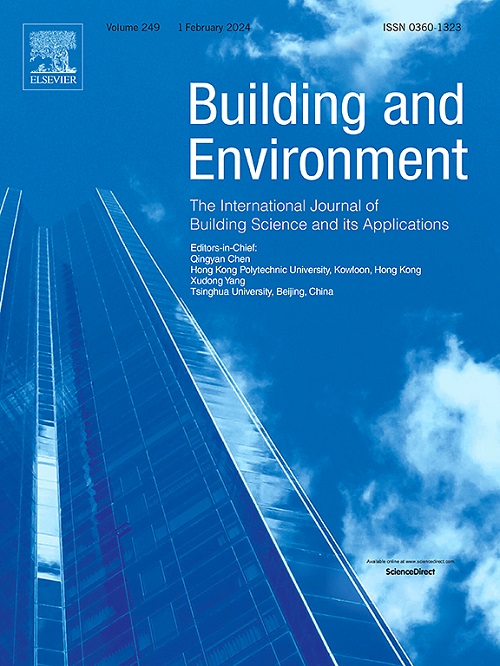Thermal management of photovoltaic systems using cascade phase change material module
IF 7.1
1区 工程技术
Q1 CONSTRUCTION & BUILDING TECHNOLOGY
引用次数: 0
Abstract
The phase change material (PCM) cooling technology has been recognized as one of the effective methods for reducing the operating temperature of photovoltaic (PV) cells and enhancing photoelectric conversion efficiency (PCE). However, the issue of slow thermal response in traditional phase change modules has posed a significant barrier to their large-scale application. To address this, a heat transfer-storage model for PV was established to investigate their temperature characteristics and thermal generation properties, based on which a cascade phase change material thermal management module (cas-SCPCM) was proposed. Among them, the PCM was comprised of paraffin (PA), expansion graphite (EG), polyethylene octene co-elastomers (POE), ethylene-ethylene-butadiene-styrene (SEBS), and carbon nanotubes (CNTs), and its thermal control performance was analyzed. The results indicated that during the operation of the PV cells, approximately 50 % of the absorbed solar energy was converted into thermal energy, leading to a temperature increase. Under various irradiance intensities, the cas-SCPCM demonstrated superior thermal control performance compared to traditional single-layer phase change material thermal management modules. At an irradiance intensity of 2000 W/m², the temperature of the cas-SCPCM photovoltaic cell was reduced by 34.6 %, and the PCE was increased by 27.1 %. Compared with the traditional phase change modules, the cas-SCPCM enables PV to exhibit better electrical output performance, providing valuable guidance for low-energy PV building integration.
采用级联相变材料模块的光伏系统热管理
相变材料(PCM)冷却技术是降低光伏电池工作温度、提高光电转换效率的有效方法之一。然而,传统相变模块热响应慢的问题对其大规模应用构成了重大障碍。为了解决这一问题,建立了光伏电池的传热存储模型,研究了光伏电池的温度特性和产热特性,并在此基础上提出了级联相变材料热管理模块(cas-SCPCM)。其中,由石蜡(PA)、膨胀石墨(EG)、聚辛烯共弹性体(POE)、乙烯-乙烯-丁二烯-苯乙烯(SEBS)和碳纳米管(CNTs)组成的PCM热控性能进行了分析。结果表明,在光伏电池运行过程中,约50%的吸收太阳能转化为热能,导致温度升高。在不同辐照强度下,与传统的单层相变材料热管理模块相比,cas-SCPCM显示出优越的热控制性能。当辐照强度为2000 W/m²时,电池温度降低了34.6%,PCE提高了27.1%。与传统的相变模块相比,cas-SCPCM使光伏具有更好的电输出性能,为低能耗光伏建筑集成提供了有价值的指导。
本文章由计算机程序翻译,如有差异,请以英文原文为准。
求助全文
约1分钟内获得全文
求助全文
来源期刊

Building and Environment
工程技术-工程:环境
CiteScore
12.50
自引率
23.00%
发文量
1130
审稿时长
27 days
期刊介绍:
Building and Environment, an international journal, is dedicated to publishing original research papers, comprehensive review articles, editorials, and short communications in the fields of building science, urban physics, and human interaction with the indoor and outdoor built environment. The journal emphasizes innovative technologies and knowledge verified through measurement and analysis. It covers environmental performance across various spatial scales, from cities and communities to buildings and systems, fostering collaborative, multi-disciplinary research with broader significance.
 求助内容:
求助内容: 应助结果提醒方式:
应助结果提醒方式:


